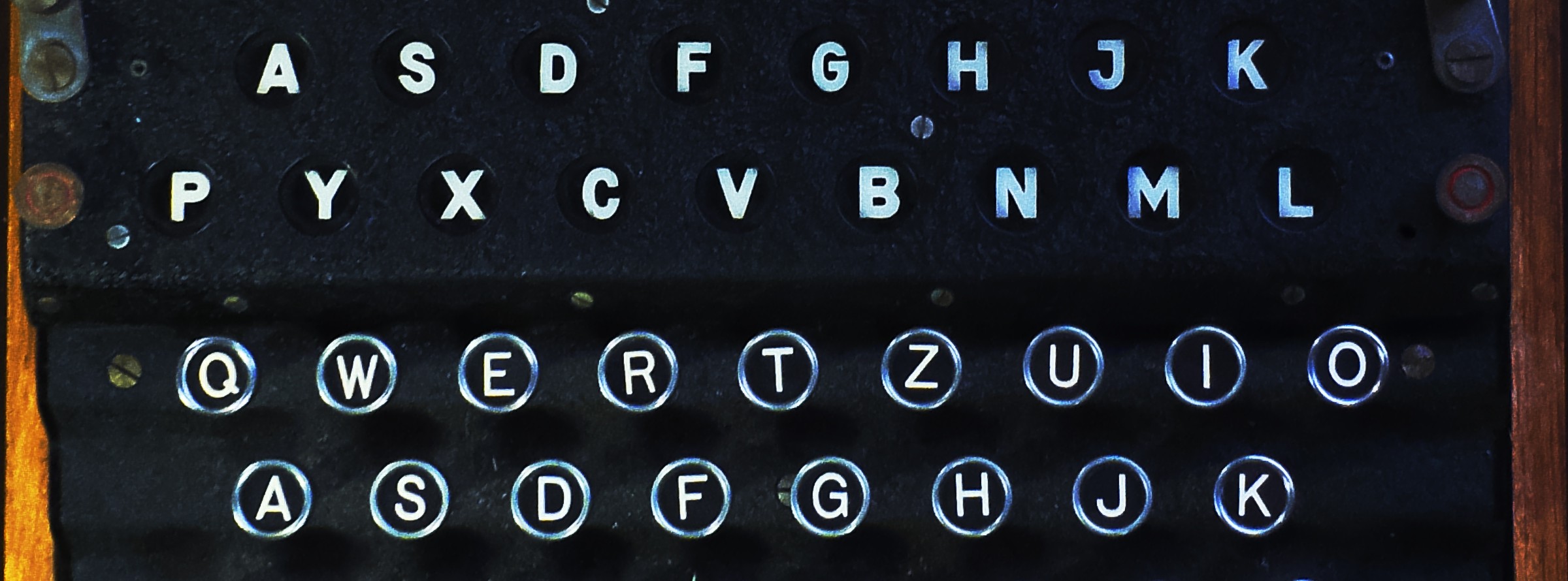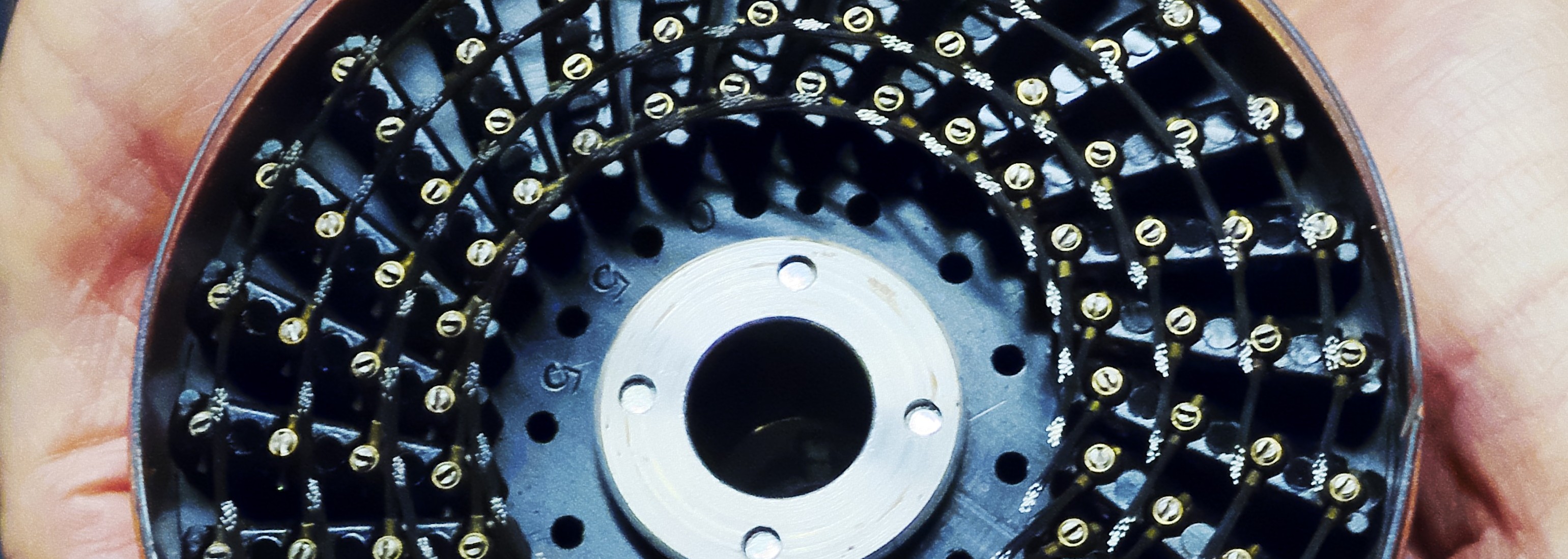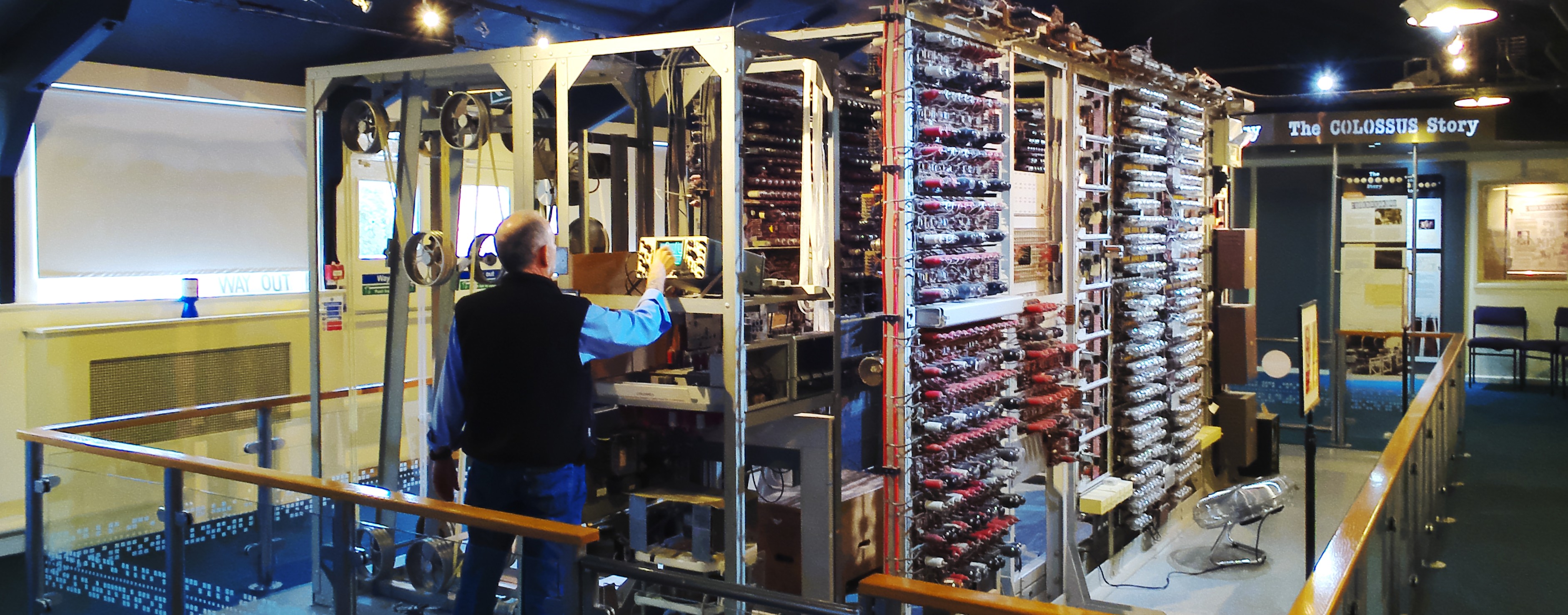A two-day special event all about Bletchley Park, daily life in World War II, codebreakers and computer history. This is a full weekend of cyphers, codebreaking, wartime life, computing and demonstrations that will interest everyone who:

Phil Hayes, who will be speaking at this event, adjusts and checks the modern-day Colossus reconstruction as it operates.

This is one of the Bletchley Park Colossus machines in use during World War II.

This is a Bombe rotor, one of many which, when automatically rotated, imitated the part of the decryption method of the Enigma machine

The three rotors of a German Enigma machine. This is the machine whose encryption can be broken by the Bombes.

The rebuilt Colossus, at the National Museum of Computing

A switch panel, on the reconstructed Colossus at the National Museum of Computing.

Some of the valves and transformers used in the present-day Colossus reconstruction at the National Museum of Computing.

The rear of a Bombe rotor, showing its brushes. Women who worked at Bletchley Park were asked to clean the contacts with their eyebrow brushes.

This is an example of the infamous Lorenz cypher machine, called "Tunny" by the codebreakers at Bletchley Park. Rather than the three wheels of Enigma, this had twelve wheels and therefore called upon multiple examples of ingenuity on the part of Bletchley Park staff. Nevertheless, with the help of the Colossus machines building upon the work of earlier devices, many Lorenz intercepts were decoded, and the war shortened.

As you will hear during the weekend's talks, the role of women at Bletchley Park was of the utmost importance.

















